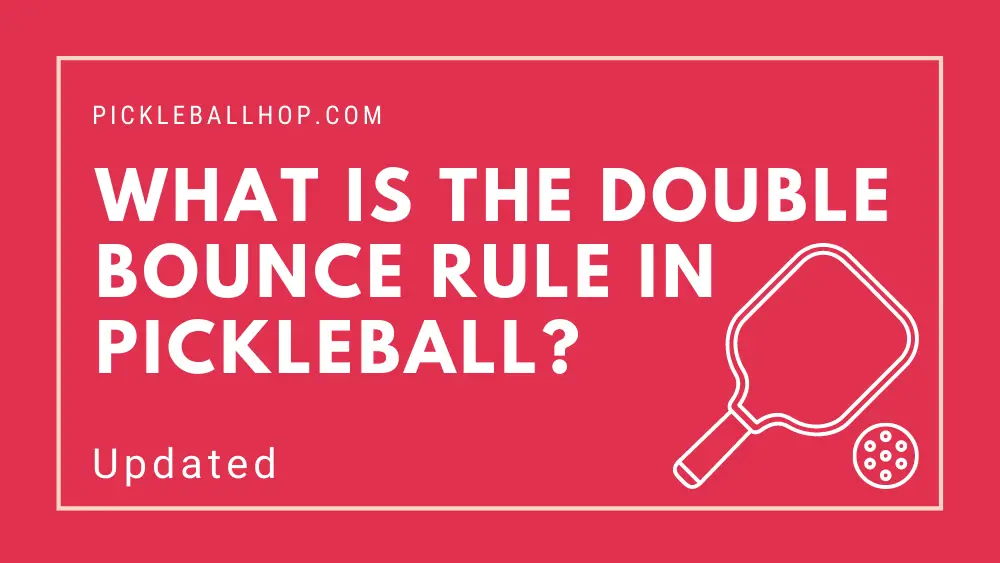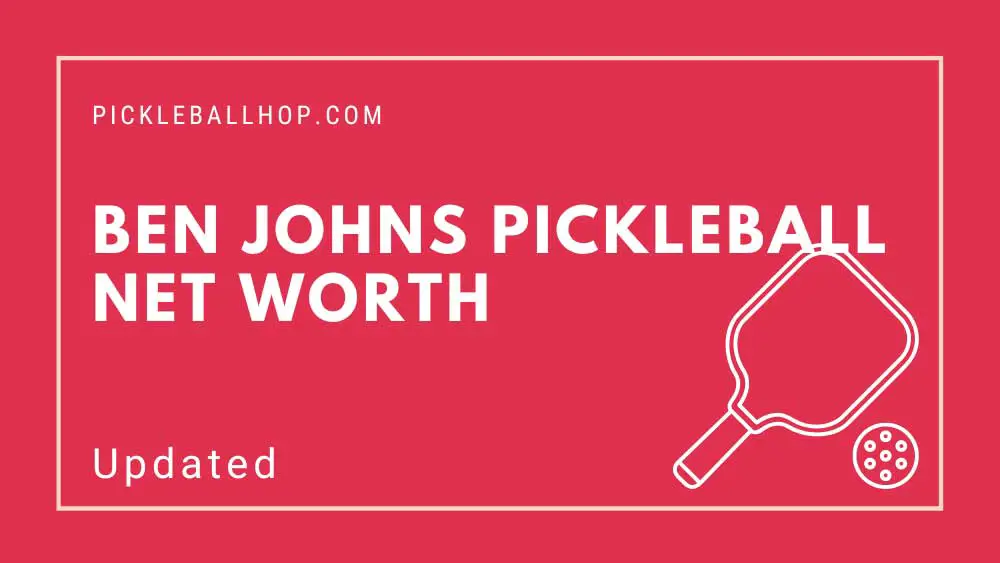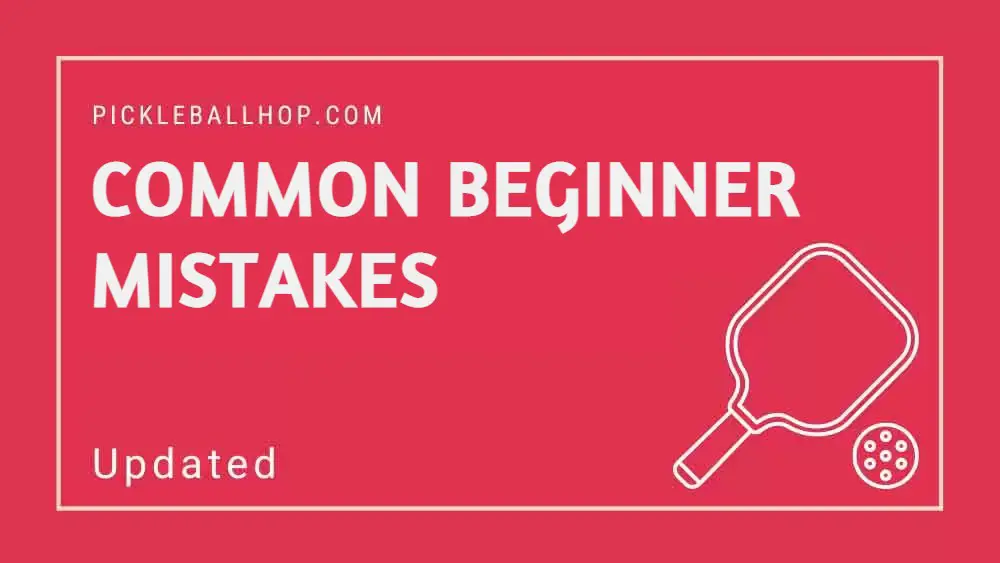Pickleball contains several jokes, expressions, and hilarious wordplays. However, one of the funnier and more true jokes about pickleball is that learning how to score is more challenging than learning how to play the game. Sometimes it appears to be true, even though it’s not!
I will explain every aspect of pickleball scoring in this article. This article will explain How To Score In Pickleball, what the numbers mean, and how to never lose track again!
What are the scoring rules for doubles pickleball?
For those of you looking for an immediate answer, here’s what you need to know: Pickleball scores are 11 points. In tournaments, scores can reach 15 points. The only way to score a point is to serve and when you do, your partner switches roles with you. In addition, you must win by two points to score a point. That’s the basic rule.
I would like to explain some of the basics of doubles pickleball before we get into scoring. The first thing we need to talk about is serving. Pickleball scoring is different from rally scoring.
Serving in pickleball
Your team can only score a point if it is serving. Note how I used the word “team”. That’s right, every team member gets to serve at least once. However, how does it work?
It is always the player on the right side of the court who serves first when the serve is your team’s turn.
Effortlessly.
When it comes to serving first, this makes it easy and foolproof. Thus, the person on the right represents the first server, while the person on the left represents the second server.
Nonetheless, it doesn’t follow a sequential order. There aren’t two sets in which each team serves twice, then the other side serves. If their team scored a point, the player is able to keep serving. It is therefore possible to reach 11 points while only serving one player. The question is what happens if you make a fault while serving or if your team makes a fault otherwise? At that point, you partner takes over. At that point, another player serves.
You are out of serves if he messes up! The term “side out” means that you have exhausted your serving options, and it is now your opponent’s turn to serve.
Another thing I would like to point out is that you switch places with your partner when your group scores a point (remember, you can only score if you’re serving).
This is a rather simple rule in pickleball, but it will be vital for keeping track of your score. we will explain more later.
Win by two!
Pickleball requires a winning margin of at least two points. The rule cannot be changed. Therefore, if your gameplays to 11 points and your current score is 10-10, then 11 points won’t suffice. For two more points ahead of your opponent, you will have to go up to 12. This will make you the winner. And so on until you have two points in the lead. You can also learn what are the 5 rules of pickleball?
Let’s discuss the numbers
Now that you know how pickleball serves work, let’s look at some numbers. There are different scoring systems for racket sports than for other sports. Frankly, the scoring for these sports can be quite confusing. In recreational pickleball, there are more disagreements about the score than about line calls. Consider the following example:
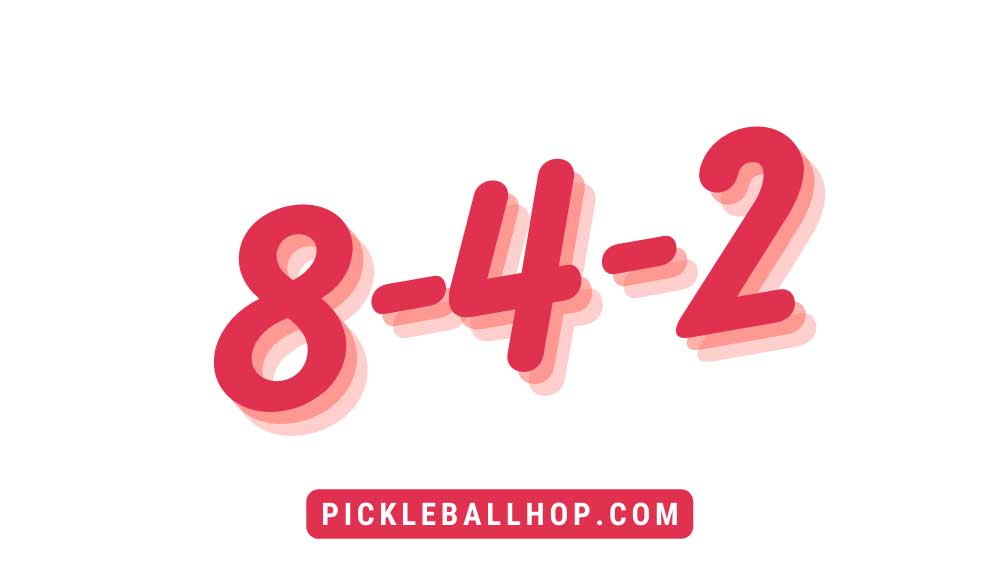 Pickleball is a very simple game, so if you are familiar with it, you already know what it is. It is likely that if you are not, that you are now the most confused you have ever been in your life. I understand. In person, I’ve tried explaining the pickleball scoring system and people often look at me as if I’m wearing fun-sized Snickers bars in my hair as they lightly open their mouths.
Pickleball is a very simple game, so if you are familiar with it, you already know what it is. It is likely that if you are not, that you are now the most confused you have ever been in your life. I understand. In person, I’ve tried explaining the pickleball scoring system and people often look at me as if I’m wearing fun-sized Snickers bars in my hair as they lightly open their mouths.
No one likes fun-size Snickers bars dancing in their hair, do they? I’d like to give you an overview of what the numbers mean so you won’t be caught off guard.
What does the scoring number mean?
Here’s what happens:
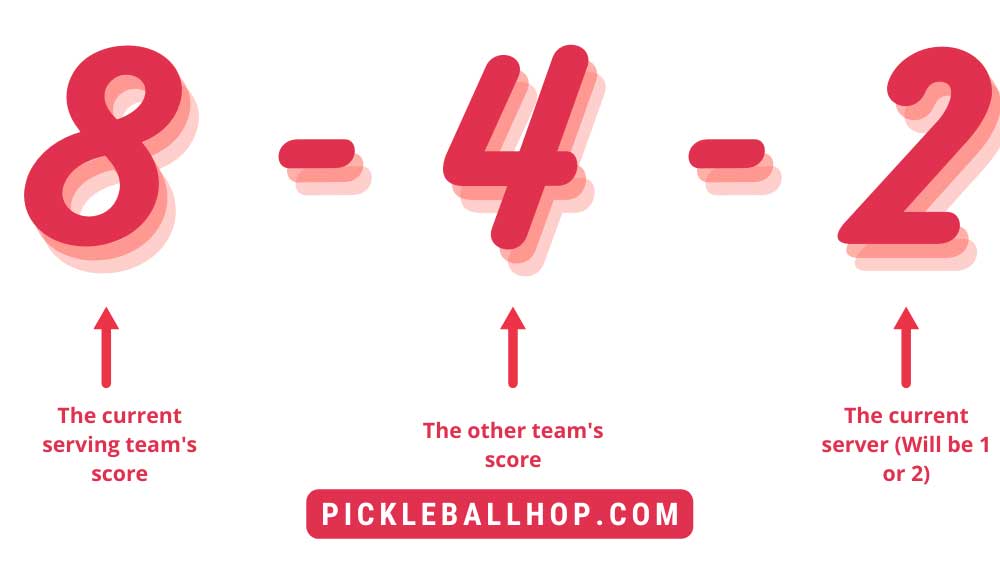 The number on the left represents the score of the serving team. It’s not always your score since it’s the serving team’s. From the perspective of the serving team, the number in the middle represents the other team’s score. Last but not least, the number represents the first or second server on the team.
The number on the left represents the score of the serving team. It’s not always your score since it’s the serving team’s. From the perspective of the serving team, the number in the middle represents the other team’s score. Last but not least, the number represents the first or second server on the team.
To keep track of the score, you have to remember that whichever team is serving the ball will be called out first, followed by the opposing team and then the server number.
Here’s an example:
 In the image above, you can see two scenarios, one in which your team serves, and one in which the opposing team serves. You can see that when your team serves, it scores 4-3-1 because it has four points, while the opposing team has three points.
In the image above, you can see two scenarios, one in which your team serves, and one in which the opposing team serves. You can see that when your team serves, it scores 4-3-1 because it has four points, while the opposing team has three points.
In the second panel, the opposite is depicted.
Your opponent now has the opportunity to serve. This game has a score of 3-4-1 and the player on the right side of the court will serve. Similarly to what I said earlier, they are the ones who serve first, so their score comes first.
The third number
During our conversation, we mentioned how each team receives two serves, one for each player? That is the number on the far right. So, for example, if you are called “side out” and your team is the one to serve, the person on your team’s right side will serve first. In this scenario, the number at the end of the score will be “1”, representing the first player to serve during your turn.
After scoring a few points, your team could then slip up. Now your partner gets to serve. Well, you scored a few points, so that’s good. The serve will now go to your opponent if your partner makes a fault.
Here’s a full example
Playing pickleball is the best thing ever. I have to clarify one thing before we begin this example. Only one serve will be given to the team that begins the match. The reason I can’t figure out why this is the case is because it’s just one of those things you have to memorize.
In other words, the person to your right will always serve first when the game starts. 0-0-2, or as some say 0-0-start, will be the final score. For the first team, this occurs only at the start of the game.
Let’s look at an example. Suppose you are the one who starts the game. There is a 0-0-2 score. The service is over the net and the opponent completely misses it. Victory! It’s you and your partner who switch places for the point. Let’s imagine:
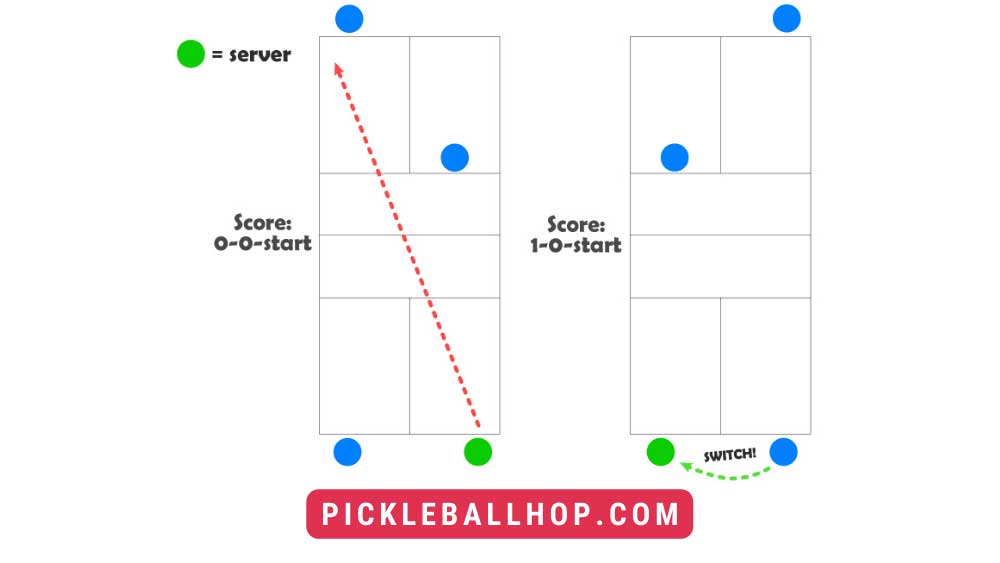 That’s nice! There is now a score of 1-0-2 or 1-0-start. After serving and scoring, you have a second chance to serve. However, you hit the ball into the net this time. That’s life. It’s happened to me too. It’s your opponent’s turn to serve now since you were the second server. What do you think the score is?
That’s nice! There is now a score of 1-0-2 or 1-0-start. After serving and scoring, you have a second chance to serve. However, you hit the ball into the net this time. That’s life. It’s happened to me too. It’s your opponent’s turn to serve now since you were the second server. What do you think the score is?
That’s right, the score now stands at 0-1-1, since your opponent was first to call out his score. It is now his partner’s turn to serve and he serves right into the net just like you did. Because he’s the second server, the score is now 0-1-2. The ball is served, and you attempt your return serve, but it goes straight into the net. The other team gets a point. The score now stands at 1-1-2.
Your partner cannot reach the ball when he serves it again. The point goes to them. We now have a 2-1-2 score. Another serve hit the top of the net and fell into the kitchen. It was a fault and the side out!
It’s now your team’s turn. Can you guess the score? You guessed 1-2-1 correctly. There are two points on the board, and your team is on the first serve. you may enjoy reading our guide How To Find Pickleball Courts Near Me
Imagine these examples in your head
In order to improve your scoring, the best thing to do is play pickleball. If you prefer, you can come up with your own examples as well. It’s also kind of fun to play these out in your head to learn how scoring works and to get a better understanding of it. You may need some time to learn pickleball scoring, but once you become comfortable with it, it will be second nature.
Nevertheless, there is often some confusion over scoring, as there was at the beginning. We’ll discuss that next.
How to keep track of the score
The interesting part begins here. Keeping score in pickleball is sometimes difficult. You can do this, though. It is fantastic that this trick exists! Before we get to the trick, let’s talk about something first.
When you serve, announce the score!
When you fail to call out the serve, it’s easy to lose track of the score. Doesn’t that seem obvious? It would surprise you to learn how many players don’t call out the serve when they play.
This is against the rules, first and foremost. Recreational play isn’t as important as tournament play, especially without a referee. In the case of hitting the ball before calling out the serve, it is considered a fault.
It’s also just good manners. The other three players on the court will have a better sense of where things are located by calling out the serve. In games nearing their end, this is particularly true. In a game where the opponent is about to win, your strategy can change significantly. This could be a disadvantage if you don’t understand it.
Don’t hesitate to rack up those points every time you serve.
Getting tricky
Pickleball scores are kept in this way. As a general rule, if you’re playing pickleball, the “even” player is always the player who starts the game on the right side of the court. In this case, the score will always be even as long as they are on the right side of the court.
It sounds complicated, but the system actually works flawlessly once put into practice. Follow these steps.
The right side for each team should be noted at the start of the game. you may enjoy reading our guide Pickleball Court Dimensions
Take a moment to imagine yourself on the right side of the court in the image above. What does that mean? That means you’re on our even numbered team. Therefore, your team will always have an even score whenever you are on the right side of the court.
Always! Irrespective of whether you’re serving or not.
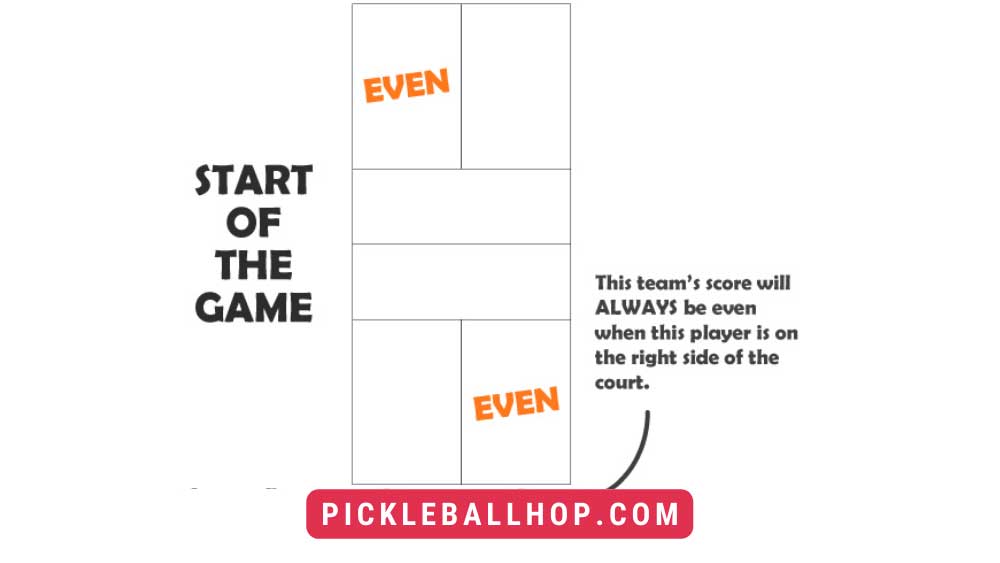 The trick is to figure it out. Put it into practice by playing it in your head or by drawing out a court. It will always work.
The trick is to figure it out. Put it into practice by playing it in your head or by drawing out a court. It will always work.
If your partner is serving, you can always expect an odd score when he is on the right side of the court, since he always started on the left side. Does that make sense? You will never overlook your score again with this trick.
How to score in singles pickleball
Pickleball singles and doubles are scored the same way. It is the same way to keep track of your score as I have shown you in the past. There is only one difference when “side out” is called.
It is the opposing player who receives the ball when the player loses their serve. Regardless, the server will select a side according to whether their score is even or odd. It’s as simple as that.
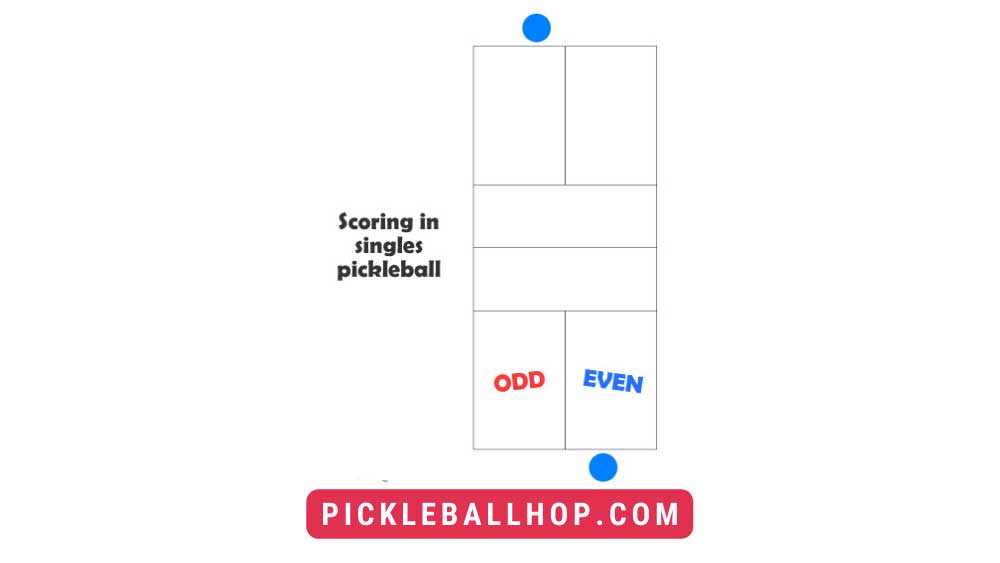 So, for instance, if you have an odd score in singles, you’ll serve to the left and if you have an even score, you’ll serve to the right.
So, for instance, if you have an odd score in singles, you’ll serve to the left and if you have an even score, you’ll serve to the right.
Final Thoughts
That’s all we have to say. This article should help you learn some basic pickleball scoring principles. Although it may seem difficult at first, using the tricks I discussed above will make it much easier for you. Thanks for reading, and feel free to ask any questions.
you may enjoy reading our guide How To Build An Outdoor Pickleball Court

